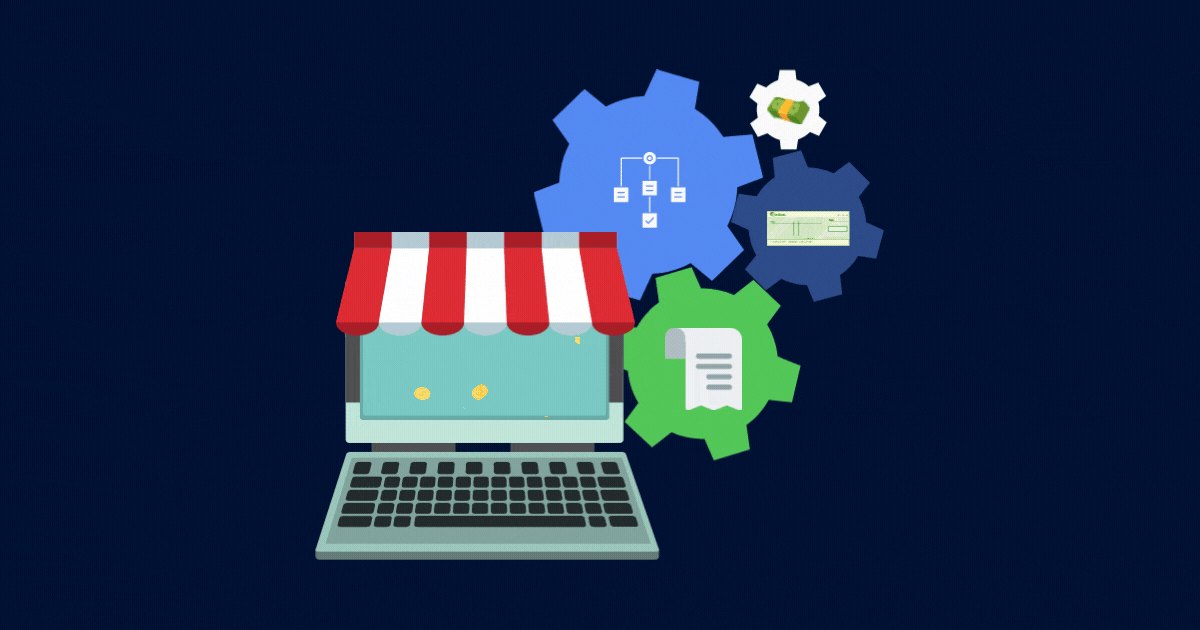
In the famous words of Wu-Tang Clan, "Cash Rules Everything Around Me (C.R.E.A.M)!" And what is one of the biggest sources of cash for small- and mid-sized businesses? Accounts receivable. Plain and simple, it's the money people owe you, but collecting payments is no simple task. Why? Because your customers want to hold onto their cash for as long as possible to maintain their own cash flow.
So, how can you make it simple for customers to pay your business so you can see the cash in your bank on time?
Why is cash flow important for your business?
Without cash, your company won't be able to pay employee salaries or keep the lights on and keep the business running. Cash flow is the net amount of cash and cash-equivalents being transferred into and out of a business. The easiest examples of this is your accounts payable and accounts receivable. Allowing your company's accounts receivable to increase is not good for business financials. It means you've done your end of the deal and provided a service or product, but your customer still owes you money for that service or product provided. You'll want to ensure you collect your receivables as quickly as possible to keep your cash flow positive.
Tips to make accounts receivable easy for your business
Like many business owners, or finance leaders, you may not immediately see the benefits of proactively optimizing your accounts receivable processes. As mentioned above, doing so can drastically improve key areas of your business.
Below are 3 tips to get started with making accounts receivable a reliable and easy process for your business:
1. Establish a credit approval process
Offering credit is often a great customer acquisition or sales boosting tactic, but you need to ensure there is a proper process in place. Why? Because extending credit could be detrimental to your own business. You're essentially extending a loan to your customers with terms for repayment. Completing sufficient background checks and having the right processes and rules in place will limit the chance of customers defaulting on payments.
2. Determine a billing and invoicing process
The billing and invoicing process for customers needs to be crystal clear and streamlined in order to be effective. Errors in pricing, units of measure, etc can wreak serious havoc on your business and customer relations. Ensure your process includes invoices being sent in a timely matter with clear payment instructions. One way to improve billing and invoicing is by automating as much of it as possible. This eliminates human errors like double invoicing or forgetting to invoice. This is something Plooto can help you out with.
3. Optimize the collection process
The easier you make the collection process for your customers to pay you, the more likely it will be that they pay you on time with minimal to no errors. A good place to start is to survey your customers to find out which payment methods work best for them. From there, consider offering a different selection of payment options to make it easier for customers to pay their invoices on time.
4. Keep it simple for your customers
A simple and intuitive receivables process with Plooto also ensures a quick one. Upon setting up a receivable from one of your customers, they will be notified via email that a payment request has been made. From there, your customer will click on a secure link and follow the steps to ensure payment is successful and made on time (read: cash in your bank).
Other benefits for your business include never having to give out your banking information to receive ACH or EFT transfers. Plooto handles the money transform so no secrets have to be shared. Ready to make it simple to receive payments from your customers?
Give Plooto a try today, free for 30-days.
CHAPTERS
00 The Complete Guide to Improving Your Business with Accounts Receivable
01 Accounts Receivables and Assets Explained
02 Accounts Receivable vs. Accounts Payable: What's the Difference?
03 What Is the Accounts Receivable Process?
04 Setting Up an AR Process; Get Paid Faster & Increase Cash Flow
05 Make it Simple to Receive Payments from Your Customers












